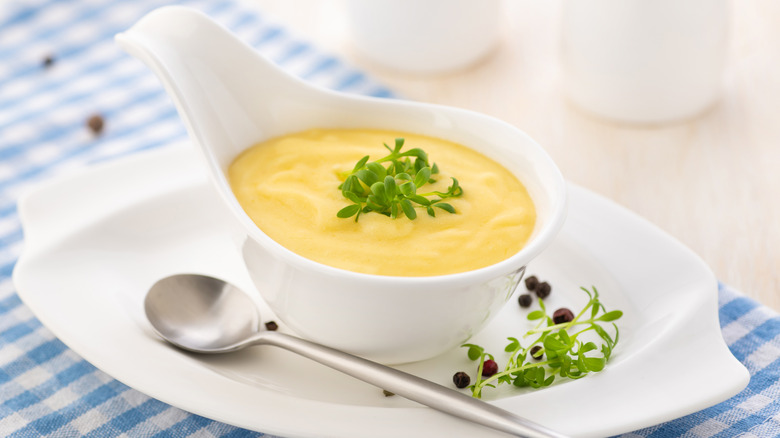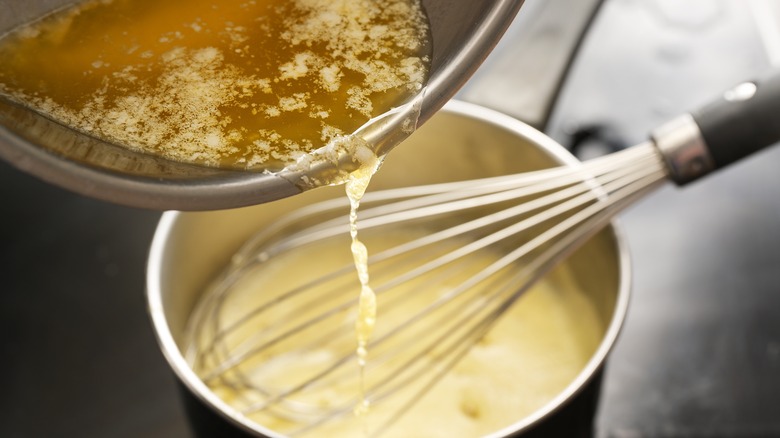The Most Common Mistake People Make With Hollandaise Sauce
Making a perfect Hollandaise might be one of the most difficult challenges for the average home cook. The recipe's narrow window for error makes it the hardest French mother sauce to make, mainly due to the use of a double boiler setup (i.e. a bowl set over a pot of hot water) to temper the egg yolks. It's far too easy to accidentally scramble the eggs as you whisk them with the other ingredients. Sound complicated? To help you avoid this issue, Food Republic sought advice from Nelson Serrano-Bahri, Director of Innovation at the American Egg Board.
On the subject of the delicious-yet-infamous Hollandaise, Serrano-Bahri said that home cooks should "carefully watch the temperature" of their cookware and ingredients. While you can potentially recover from breaking the emulsion of the sauce, you won't be able to fix the texture if you accidentally overcook the yolks. Any contact with a too-hot surface will cause your eggs to scramble into chunky curds. Therefore, Serrano-Bahri advises to keep an eye on the water underneath your bowl. It should be at a bare simmer, and no hotter than that. And when it's time to drizzle in melted butter to form the creamy sauce, make sure the butter has cooled considerably, as the hot fat can also accidentally cook the eggs.
Other tips to keep your Hollandaise sauce from breaking
Hollandaise sauces are best cooked at temperatures around 120-140 degrees Fahrenheit. Anything over this maximum puts this condiment at risk of splitting, which occurs when the creamy, smooth emulsion of the egg yolks, lemon juice, and melted butter breaks. The sauce will separate into pools of fat floating in liquid. Thankfully, you can fix it by carefully adding drops of boiling water into the sauce while whisking, or by whipping in a fresh egg yolk into the mixture. If you want to avoid the use of heat entirely, Serrano-Bahri recommends using a powdered mix or mayo to make a Hollandaise in half the time.
If you do decide to make traditional Hollandaise sauce, it can be helpful to avoid drizzling in all the melted butter in one swoop. This can cause it to pool on the surface of your mixture, and make it difficult to blend it with the egg yolks. You'll want to carefully pour in small amounts of butter while you're whisking the sauce vigorously over the heat. When you're done with your Hollandaise, drizzle it over your favorite egg, meat, and veggie dishes, or mix it with some reduced wine vinegar to create a béarnaise, which is different in flavor but equally delectable.


